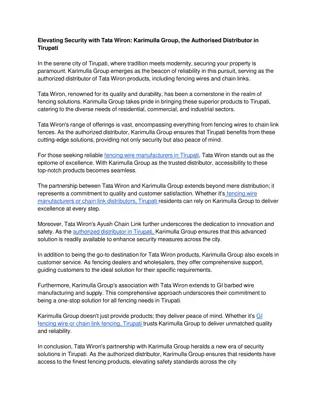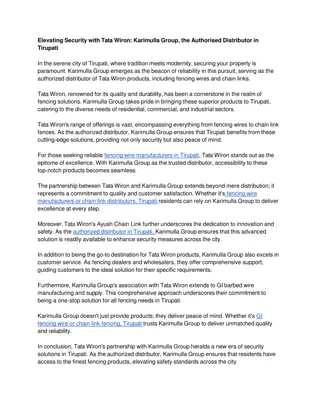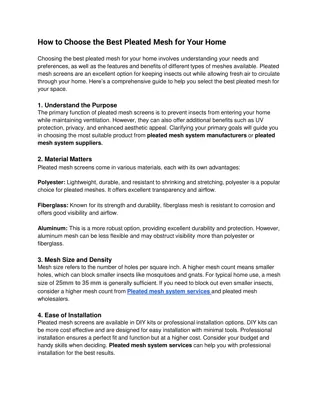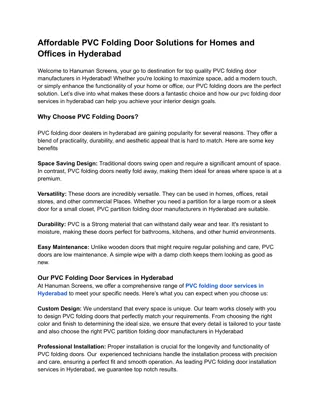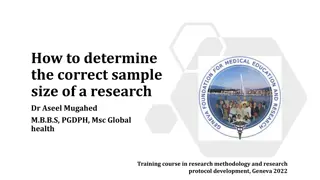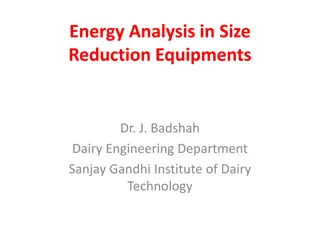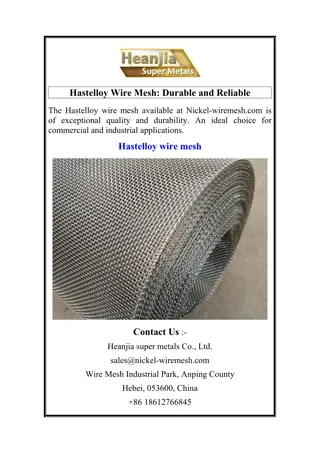Choosing the Right Mesh Size for Your Re-Strainer: A Lab Guide
Selecting the right mesh size for your Re-Strainer is key to achieving efficient and accurate filtration. Whether used alone or in a strainer cascade, this best lab cell strainer provides flexibility for various laboratory applications. By choosing t
Uploaded on Mar 10, 2025 | 2 Views
Download Presentation

Please find below an Image/Link to download the presentation.
The content on the website is provided AS IS for your information and personal use only. It may not be sold, licensed, or shared on other websites without obtaining consent from the author.If you encounter any issues during the download, it is possible that the publisher has removed the file from their server.
You are allowed to download the files provided on this website for personal or commercial use, subject to the condition that they are used lawfully. All files are the property of their respective owners.
The content on the website is provided AS IS for your information and personal use only. It may not be sold, licensed, or shared on other websites without obtaining consent from the author.
E N D
Presentation Transcript
Selecting the appropriate mesh size is crucial for achieving accurate filtration and separation in laboratory applications. Whether you're working with biological samples or chemical solutions, using the best lab cell strainers ensures precise and reliable results. The Re-Strainer is a highly efficient in-line strainer designed for seamless filtration, offering 15 different mesh sizes ranging from 1 m to 500 m. Understanding how to choose the right mesh size can help optimize workflows and improve sample purity.
The Re-Strainer is a lab cell strainer that serves as an in-line filter with two Luer-Lock adaptors for easy connection. It has a 6 ml recovery reservoir, accessible by unscrewing the cap, allowing users to collect filtered material efficiently. The Re-Strainer can be used individually or connected to multiple units in a strainer cascade, enabling multi-step filtration for complex samples.
Mesh size determines how effectively the cell strainer can filter particles. The Re-Strainer offers 15 mesh size options, allowing researchers to customize their filtration process based on sample type and application. Here s how different mesh sizes are commonly used: 1 m - 10 m: Best for filtering small particles, bacteria, or fine debris from liquid samples. 15 m - 50 m: Suitable for removing cell aggregates and unwanted particles in cell culture preparations. 70 m - 100 m: Commonly used for blood sample filtration, ensuring smooth separation without damaging cells. 150 m - 500 m: Ideal for removing large debris and unwanted particulates in industrial or research applications.
Using the correct mesh size in your lab cell strainer offers several advantages: Improved Sample Purity: Ensures only the required particles pass through while unwanted material is removed. Higher Efficiency: Reduces clogging and improves flow rates, allowing for smoother filtration. Enhanced Cell Viability: In cell separation technology, the right mesh size prevents damage to delicate cell populations.
For complex samples requiring multi-stage filtration, multiple Re-Strainers can be connected in a strainer cascade. This setup allows for gradual size reduction, filtering out larger particles first before fine filtration. This method is particularly useful for: Blood sample processing to remove platelets, white blood cells, and debris in steps. Tissue dissociation to obtain single-cell suspensions. Microbial filtration where different particle sizes need to be isolated.
When choosing a Re-Strainer mesh size, consider the following factors: 1.Sample Type: Determine whether you need to filter cells, bacteria, or debris. 2.Desired Purity: Smaller mesh sizes provide finer filtration, while larger ones retain bulkier materials. Flow Rate Requirements: Fine mesh sizes may reduce flow speed, so balance precision with efficiency.
Selecting the right mesh size for your Re-Strainer is key to achieving efficient and accurate filtration. Whether used alone or in a strainer cascade, this best lab cell strainer provides flexibility for various laboratory applications. By choosing the correct mesh size, researchers can enhance workflow efficiency and improve sample quality, making the Re-Strainer an essential tool for modern lab filtration needs.


